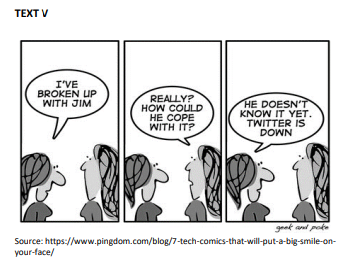TEXT VI
Literacy Instruction for Young EFL Learners:
A Balanced Approach
Developing literacy skills in a foreign language can begin as
early as foreign language instruction begins. Although some EFL
programs delay literacy instruction for young learners and only
focus on oral language development, studies have shown that it is
not necessary, or even recommended, to take this approach. First,
it is widely known that literacy skills in the native or first language
(L1) can be transferred to reading and writing in a foreign
language, such as English. Remember that “One only has to
become ‘literate’ once” (Shin and Crandall, 2014, p. 160), so
English as a foreign language (EFL) teachers can tap into students’
understanding of print and strategies for making meaning from
text that originate in their L1 as a starting point for building literacy
in English. Even further, research supports that literacy skills can
be transferred bidirectionally—that is, both ways between L1 and
L2—and the language of initial literacy does not necessarily need
to be the L1. Even preschool-age children who are not yet literate
in their L1 can still engage in early literacy activities that build
reading readiness and phonemic awareness. Teachers can read big
books with print aloud and use songs and rhymes to focus on the
sounds of English. They can also engage students in writing
readiness exercises like tracing, connecting the dots, and coloring.
These are fun and effective activities for building early literacy with
young EFL learners.
Although EFL teachers usually have limited time in class,
sometimes only 3–5 hours a week, they should incorporate literacy
instruction and not just oral skills development for young learners,
especially because learning to read is also proven to assist in oral
language development.[…] If students progress faster when
reading is part of language instruction, EFL teachers of young
learners should use a curriculum that integrates all four language
skills and provides a balanced approach to literacy instruction.
Note: Shin, J. K., & Crandall, J. A. (2014). Teaching Young
Learners English: From Theory to Practice. Boston: National
Geographic Learning/Cengage Learning.
Adapted from https://www.eltngl.com/assets/downloads/
ourworld2_pro0000009113/ourworld2e-literacy-instruction.pdf
